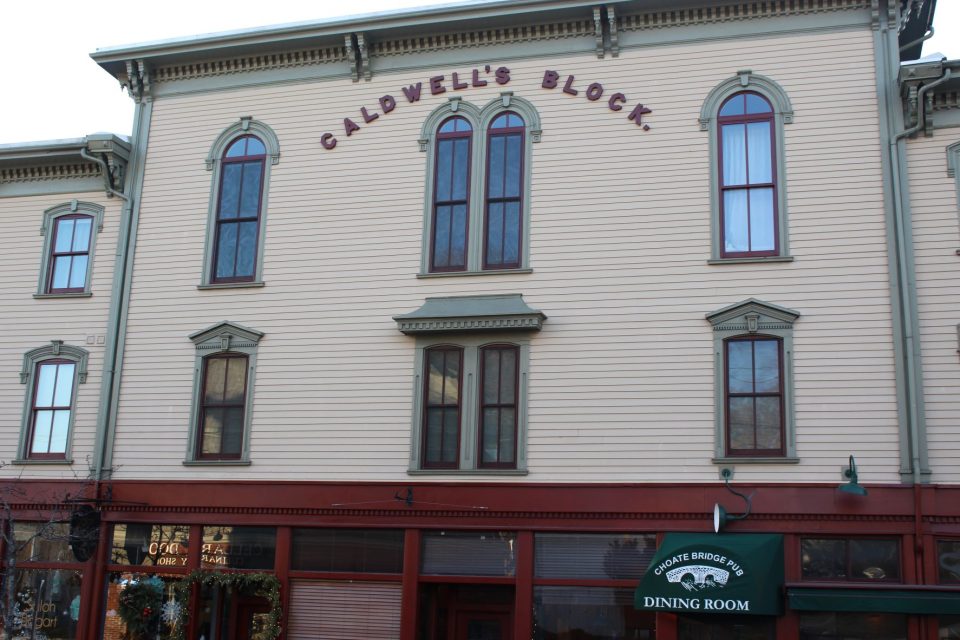IPSWICH – Next time, you stop at the Choate Bridge Pub for a clam chowder or a burger, bring along a copy of John Updike’s Couples or Rabbit Run.
You will impress other diners with your literary acumen as you enjoy the exploits of Harry “Rabbit” Angstrom or the 10 couples that Updike wrote about in the award-winning novels written in an office he rented above the pub.
Updike, who won the Pulitzer Prize twice, and at 32, was the youngest person ever elected to the National Institute of Arts and Letters, lived and wrote for 17 years in Ipswich. In the office above the pub, he wrote seven of his novels, including his award-winning Couples, which earned him the cover of Time Magazine.
The town’s Historical Commission is preparing to erect a plaque to honor the prolific author on the door of the Caldwell Building, which houses the Choate Bridge Pub. The owner, the John T. & Priscilla Coughlin Trust, has agreed to installing the plaque.
While living in Ipswich, Updike volunteered as a member of the historical commission and helped write a book on Ipswich for the commission, Something to Preserve.
The exact position of the plaque – above or beside the door – has not been decided. Nor has the inscription been written by commission vice chair Rachel Meyer.
The building is already on the National Registry, but most passersby know nothing of Updike renting an office there.
“In 1957, John Updike moved to Ipswich, where he and his family lived in the Polly Dole house on East Street for seventeen years,” wrote town historian Gordon Harris. “Updike wrote that ‘Most Americans have not had the happy experience of living for thirteen years in a seventeenth-century house, since most of America lacks seventeenth-century houses.
In fact, Ipswich’s boom and bust economy combined to leave its First Period houses intact, more than any other town.
Harris quoted Updike: “To wake and work in such a house felt like an honor, a privileged access to the elemental clarity of the spirit that created the first Puritan settlements in the New World.”
Updike was an established writer for The New Yorker and one of the nation’s most promising young novelists when he moved his family to Ipswich. It comprised of four children, including Newbury sculptor Michael Updike.
The Pennsylvania native and Harvard College graduate came to Ipswich looking for “middleness” of America, although he claimed he just wanted to be close to his hero, Red Sox outfielder Ted Williams.
Couples and several short stories were based in a fictional community, called Tarbox, which was probably Ipswich, although Updike denied it.
“Like Ipswich, Tarbox was a small coastal town founded in 1634. Its streets were lined with 17th century saltboxes, the downtown street had three banks and a Woolworths,” Harris wrote for the web site Historic Ipswich.
“Several of Updike’s stories were based in Tarbox, Massachusetts, a fictional town that was supposedly 30 miles south of Boston, but matched in every detail the town of Ipswich, 30 miles north of the city. Like Ipswich, Tarbox was a small coastal town founded in 1634. Its streets were liked with 17th century saltboxes, the downtown street had three banks and a Woolworths. It served as the setting for the 1968 novel Couples, which was on the best-seller list for over half a year. The lives of his Ipswich acquaintances provided the raw material for the sexual exploits in the story, and created much resentment in the town. The Updikes purchased a house on Labor in Vain Road adjacent to the bridge (now known as the Weatherall house). In 1973 the Updikes divorced and John Updike relocated to Beacon Hill, after which he moved to Beverly Farms with his second wife, Martha. John Updike died at age 76 in 2009.”
John Updike Wrote Here
Tuesday December 27, 2022

The Caldwell Building



